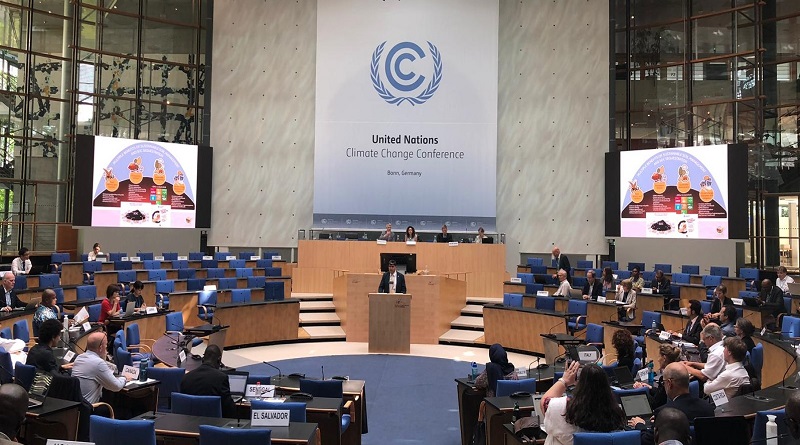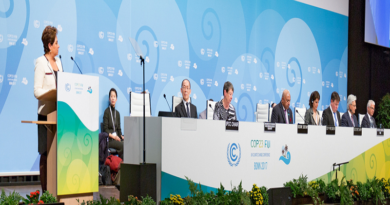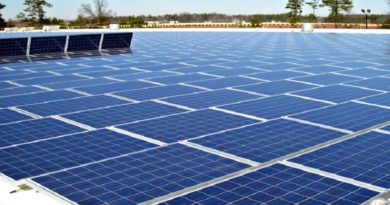How climate technology connects to action on water, energy and food
A thematic dialogue at the Bonn UN Climate Change Conference in June this year showed how nations can more effectively tackle the climate crisis by adopting a comprehensive and interconnected approach that addresses the water-energy-food nexus.
For example, agri-food systems contribute around one-third of global energy consumption and around two-thirds of global freshwater withdrawal.
At the same time, 80% of the world’s food is produced by family farmers. It is therefore crucial to enable such farmers to become leaders of climate solutions across the agrifood systems, as opposed to only focusing on industrial food production.
This was one of the key insights that emerged at a dialogue organized by the UNFCCC Technology Executive Committee (TEC) in collaboration with the Food and Agriculture Organization of the United Nations (FAO), with contributions from the United Nations Industrial Development Organization (UNIDO).
The event focused on the urgent need for a systemic solution that harnesses innovation and technology.
Examples of successful initiatives included the FAO’s Energy Smart Food program, which promotes renewable energy and energy efficiency in agri-food systems.
The FAO Hand-in-Hand Initiative and the FAO Digital Villages Initiative demonstrate the key role of digital technologies in improving efficiency, production, and helping farmers and others to manage natural resources in a sustainable way.
Whilst the FAO Hand-in-Hand Initiative aims, for example, to introduce more efficient water management systems and precision agriculture with the help of advanced geospatial modeling and analytics, the Digital Village Initiative makes use of digital services and solutions to support farming and empower rural women, leveraging the use of smartphones, the internet and drones to survey fields.
Zitouni Ould-dada, Deputy Director, Office of Climate Change, Biodiversity and Environment to two important strategies that will guide FAO’s work over the coming decade: the FAO Strategy on Climate Change, and the FAO’s Science and Innovation Strategy. Both are are key to scale up innovative solutions on the ground.
Panelists and participants also discussed how innovation and technology have emerged as crucial tools for countries to expedite the implementation of their nationally determined contributions (NDCs) and national adaptation plans (NAPs) in response to these challenges.
Multi-institutional and multi-scale coordination across all sectors is a critical step for the systemic change in transforming water-energy-food nexus. For instance, the use of solar energy is often linked to multiple NDC and NAP targets in many countries. Installing solar powered pumps and water retention basins can support local communities to achieve cost savings, reduction of CO2 emissions, and an increase of crop production.
The role of youth and indigenous peoples
Youth and indigenous leaders made compelling cases for inclusive transformative change.
Young people have the potential to catalyze climate actions using innovative solutions which also create jobs for them. This includes the deployment of drones and seeds bred for higher nutritional value, along with digitalizing data systems.
Advanced agricultural technologies are not the only way to go. Traditional and local knowledge are key elements of innovative technologies. For example, Ifugao Rice Terraces in the Philippines demonstrate how indigenous technologies can sustain harmonious ecosystems while maintaining water-energy-food security. The Philippines rice terraces, in use for around two thousand years, not only produce nutritious food for the community, but also filter and purify rainwater from tropical indigenous species mountains to the villages on the foot of the mountains.
Work on climate technology and innovation in water-energy-food systems will be a key focus for the UNFCCC’s Technology Mechanism (TEC) in the coming years.
Stig Svenningsen, Chair of the TEC, pointed out that the event in Bonn would be followed with more exchanges and collaborations with technology stakeholders and partners in the coming months.
Regional Climate Weeks will be used forums for further discussion and action given that such regional events allow stakeholders to delve deeper into the specific challenges and opportunities within their respective contexts.




